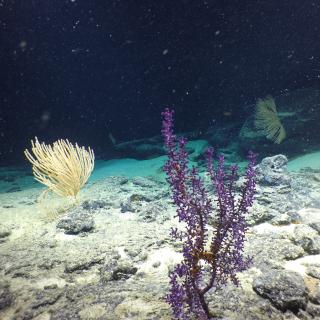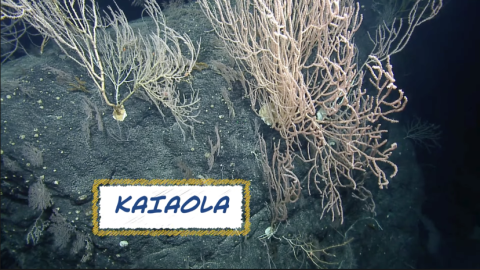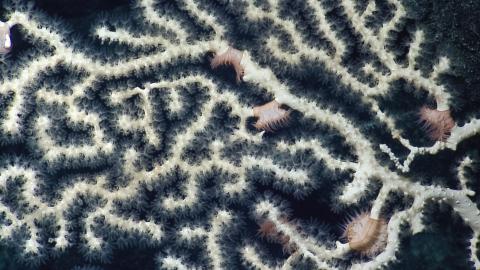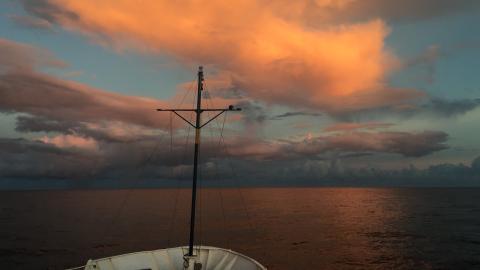Serious and Surreal Sponges on Don Quixote Seamount
What’s gotten our scientists so excited in this video? While exploring the Don Quixote seamount of Papahānaumokuākea Marine National Monument, E/V Nautilus found these incredible displays of sponge diversity and morphology including a potential first-time spotting of the Hertwigia genus in the Pacific Ocean. Listen to University of Hawai'i’s Dr. Chris Kelley explain the potential for this exciting discovery and learn more about these spectacular invertebrates in this never-before-surveyed region.
This sponge-filled landscape (including some rather large Poliopogon species), almost 2,000 meters deep, is considered “prime real estate” on the reef because of the abundance of life it can support. Sponges are relatively simple creatures that feed on bacteria and plankton from the sea water flowing through their porous bodies. Despite lacking major organs such as hearts, brains, or stomachs, sponges are integral members of the underwater ecosystem that make life possible for hundreds of other species like the tiny shrimp seen in the video.
While the marine species from shallow waters are relatively well surveyed, the biological communities from the deeper seamounts are largely unexplored. Like shallow coral reefs, these habitats represent hot-spots of biological diversity. Make sure you’re following along with our expeditions as we continue to discover, identify, and study the amazing deep-sea biodiversity of Papahānaumokuākea Marine National Monument!

Luʻuaeaahikiikapapakū - Ancient Volcanoes in Papahānaumokuākea Marine National Monument
Returning to Papahānaumokuākea Marine National Monument (PMNM) after an expedition in 2018, our team will be conducting ROV surveys on a chain of seamounts, and document whether these underwater mountains support vibrant coral and sponge communities like others in the region.



